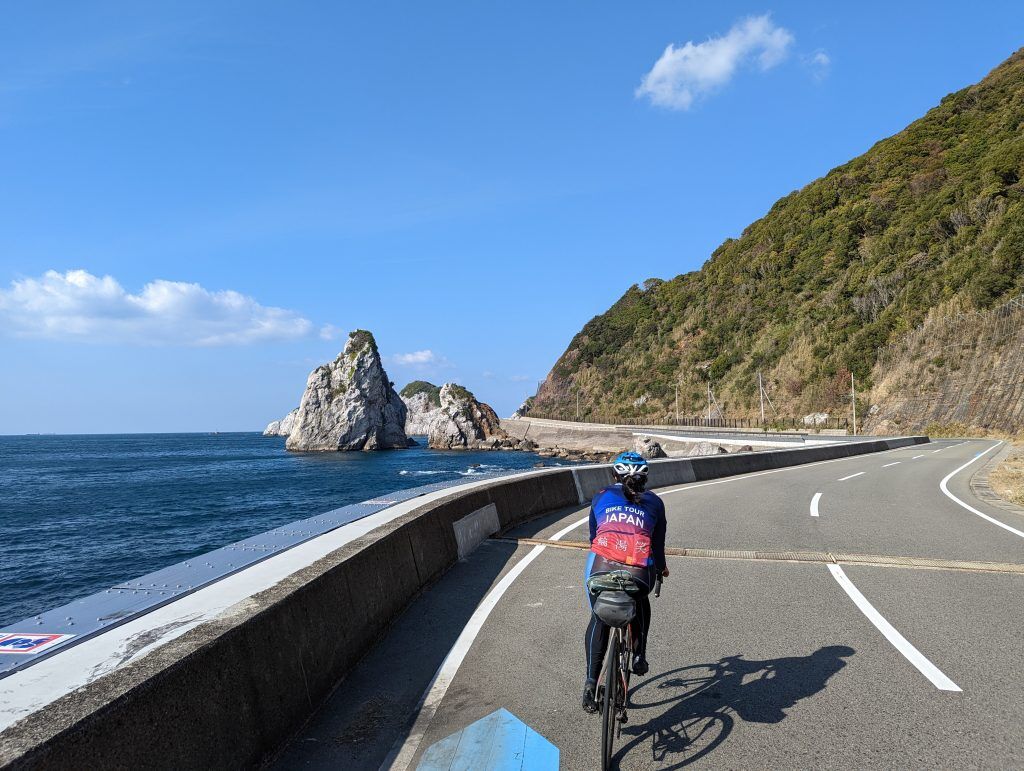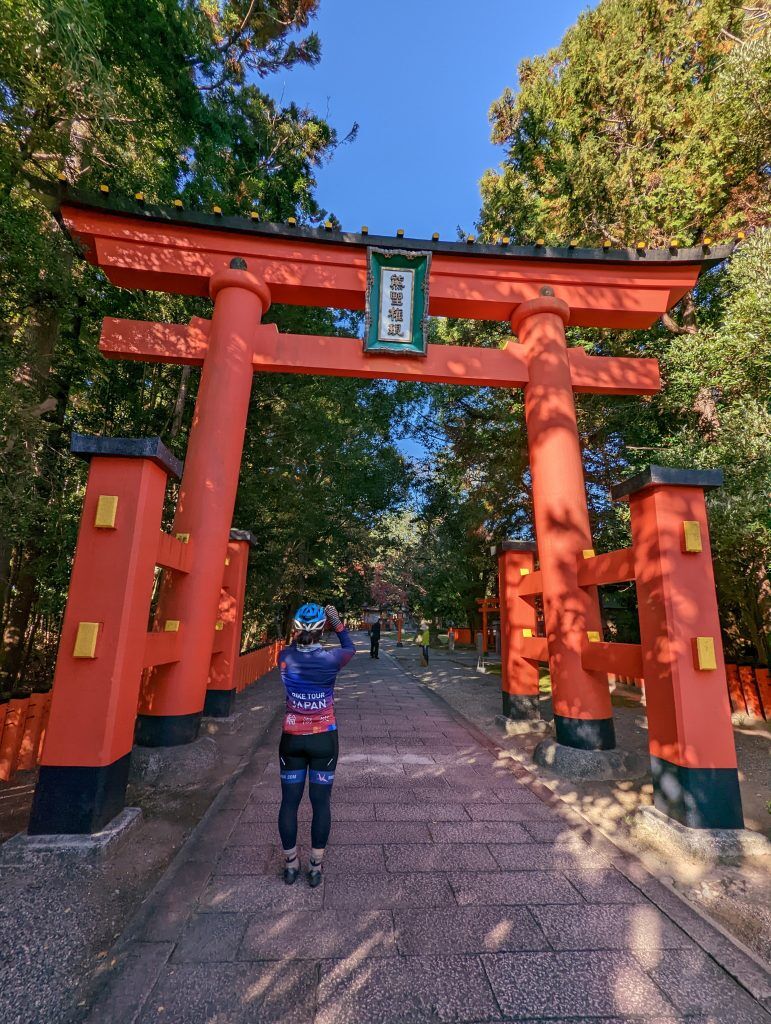Kii Peninsula: A Guide to Japan's Best-Kept Secret
Feb 19, 2025Discover the Kii Peninsula, Japan's hidden gem. Explore ancient pilgrimage routes, serene hot springs, and breathtaking landscapes for an unforgettable adventure.
The Kii Peninsula travel, a realm of unparalleled beauty and profound spirituality, remains one of Japan's best-kept secrets. Nestled south of Osaka and Kyoto, this captivating region offers a unique blend of breathtaking natural landscapes, rich cultural heritage, and unforgettable experiences that resonate deeply with the mind, body, and soul. From ancient pilgrimage routes to serene hot springs and picturesque coastlines, the Kii Peninsula promises an authentic Japanese adventure away from the bustling crowds.
A Land Shaped by Nature and Spirituality
The Kii Peninsula, comprising Wakayama, Mie, and Nara prefectures, boasts a dramatic landscape characterized by dense rainforests, rugged mountains, and a stunning Pacific coastline. This unique geography has fostered a microclimate with abundant rainfall, giving rise to cascading waterfalls, lush gorges, and a cooler, more temperate environment. This natural abundance has also significantly influenced the development of unique Japanese religious ideas and culture throughout history. The peninsula's spiritual significance is palpable, making it a haven for those seeking cultural immersion and a connection with nature.
 Credit: biketourjapan.com
Credit: biketourjapan.com
UNESCO World Heritage Sites: A Testament to History and Culture
The Kii Peninsula is home to a collective UNESCO World Heritage Site known as the Sacred Sites and Pilgrimage Routes in the Kii Mountain Range. Divided into three key areas, this designation encompasses a wealth of shrines and temples, as well as pristine natural areas like primeval forests and the famed Kumano Kodo pilgrimage trails.
Kumano Kodo Pilgrimage Routes
The Kumano Kodo travel pilgrimage routes are a network of ancient trails that crisscross the Kii Peninsula, connecting the region's most sacred sites. These routes have been traversed by pilgrims for over a thousand years, seeking spiritual enlightenment and connecting with the natural world. Walking these trails offers a unique opportunity to experience the beauty of the Kii Peninsula firsthand, while also immersing yourself in its rich history and culture. The most well-known of these is the Nakahechi Route, which leads to the Kumano Hongu Taisha.
 Credit: cheapoguides.com
Credit: cheapoguides.com
Kumano Sanzan: The Three Grand Shrines
The Kumano Sanzan refers to the three grand shrines of the Kumano region: Kumano Hongu Taisha, Kumano Hayatama Taisha, and Kumano Nachi Taisha. These Shinto shrines are incredibly sacred and a common pilgrimage destination, hidden away in the forests near the southern end of the peninsula. The route between the three is known as the Kumano Sankeimichi and also includes two additional Buddhist temples. Visiting the Kumano Sanzan isn’t just for those interested in Japan’s spiritual side, it’s also perfect if you want the country’s natural side.
 Credit: biketourjapan.com
Credit: biketourjapan.com
Koyasan: A Mountain of Sacred Significance
Koyasan (Mount Kōya) is a mountaintop temple complex, the birthplace of Shingon Buddhism and home to over 100 temples. This sacred mountain offers visitors a chance to experience traditional Japanese culture through temple stays (shukubo), meditation sessions, and exploring the serene Okunoin Cemetery, the final resting place of Kobo Daishi, the founder of Shingon Buddhism. One of the most important temples here is Danjo Garan, which has been a centre of religious teaching since the 9th century. Another major temple is the Oku-no-in sanctuary, home to a cemetery of 200,000 tombs and the mausoleum of Kōbō Daishi.
 Credit: cheapoguides.com
Credit: cheapoguides.com
Unveiling the Natural Splendor of the Kii Peninsula
Beyond its spiritual significance, the Kii Peninsula travel is also blessed with an abundance of natural beauty. The peninsula is home to two national parks – Ise Shima and Yoshino Kumano – as well as primeval forests, unique rock formations, and an abundance of waterfalls.
Nachi Falls: A Majestic Cascade
One of the most iconic images of Japan, Nachi Falls plunges an impressive 133 meters, making it the country's tallest waterfall. Located near the Kumano Nachi Taisha Shrine, Nachi Falls offers a stunning combination of natural beauty and spiritual significance. The surrounding forests are hauntingly beautiful with ancient root formations and towering millenia-old trees.
 Credit: cheapoguides.com
Credit: cheapoguides.com
Coastal Wonders: Beaches and Rock Formations
The Kii Peninsula travel isn't just about mountains and forests; it also boasts a stunning coastline with beautiful beaches and unique rock formations. Shirahama, known for its white sand beaches and hot springs, offers a relaxing escape by the sea. Engetsu Island, off the coast of Shirahama, is famous for its natural arch, through which you can witness breathtaking sunsets. The Senjojiki rock plateau, with its vast expanse of smooth, layered rocks carved by the waves over centuries, is another must-see coastal attraction.
 Credit: cheapoguides.com
Credit: cheapoguides.com
Immerse Yourself in Local Culture and Traditions
The Kii Peninsula travel offers a chance to experience authentic Japanese culture and traditions, from ancient pilgrimage rituals to local cuisine and crafts.
Onsen Towns: Relax and Rejuvenate
The Kii Peninsula is dotted with numerous onsen towns, each offering a unique bathing experience. Yunomine Onsen, one of Japan's oldest spa towns, is deeply intertwined with the Kumano Kodo pilgrimage. Kawayu Onsen offers a unique experience where you can dig your own hot spring bath in the riverbed. Shirahama Onsen combines the best of both worlds with its white sand beaches and rejuvenating hot springs.
Culinary Delights: A Taste of the Kii Peninsula
The Kii Peninsula travel boasts a diverse culinary scene, with specialties ranging from fresh seafood to local produce and traditional crafts. Yuasa, the birthplace of soy sauce, offers tours of local breweries where you can learn about the traditional fermentation process. Kuroshio Market, considered the best fish market outside of Tokyo, specializes in tuna and offers exciting tuna-cutting demonstrations. Wakayama, responsible for around 60% of ume crops brewing in Japan, unsurprisingly has a lot of umeshu.
 Credit: cheapoguides.com
Credit: cheapoguides.com
Planning Your Kii Peninsula Adventure
The Kii Peninsula is easily accessible from major cities like Osaka and Kyoto. The Japan Rail Pass is a convenient option for traveling around the peninsula, with trains connecting various cities and destinations. Consider JR West regional passes for travel solely within the peninsula.
When to Visit: Choosing the Right Season
When planning your Kii Peninsula travel, consider the region's weather patterns. The area is known for being part of the wettest region in the country, as well as being one of the most vulnerable to typhoons. Therefore, you probably don’t want to plan a visit during Japan’s typhoon season which runs from June to October and is at its strongest during July and August. The best times to visit are during the spring (April-May) and autumn (October-November) for pleasant weather and stunning scenery.
The Kii Peninsula is a treasure trove of experiences waiting to be discovered. From its sacred sites and ancient pilgrimage routes to its breathtaking natural landscapes and unique cultural traditions, this lesser-known region offers an authentic and unforgettable Japanese adventure. So, venture off the beaten path and explore the wonders of the Kii Peninsula, a true gem of Japan.